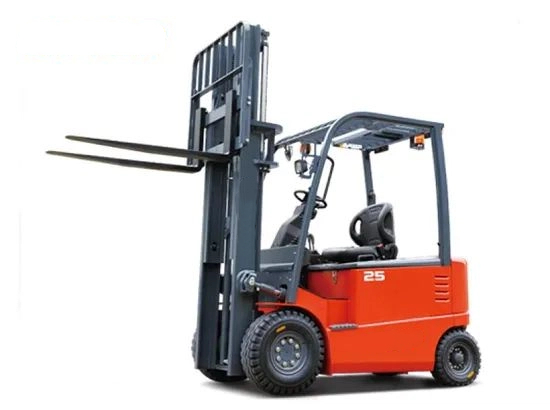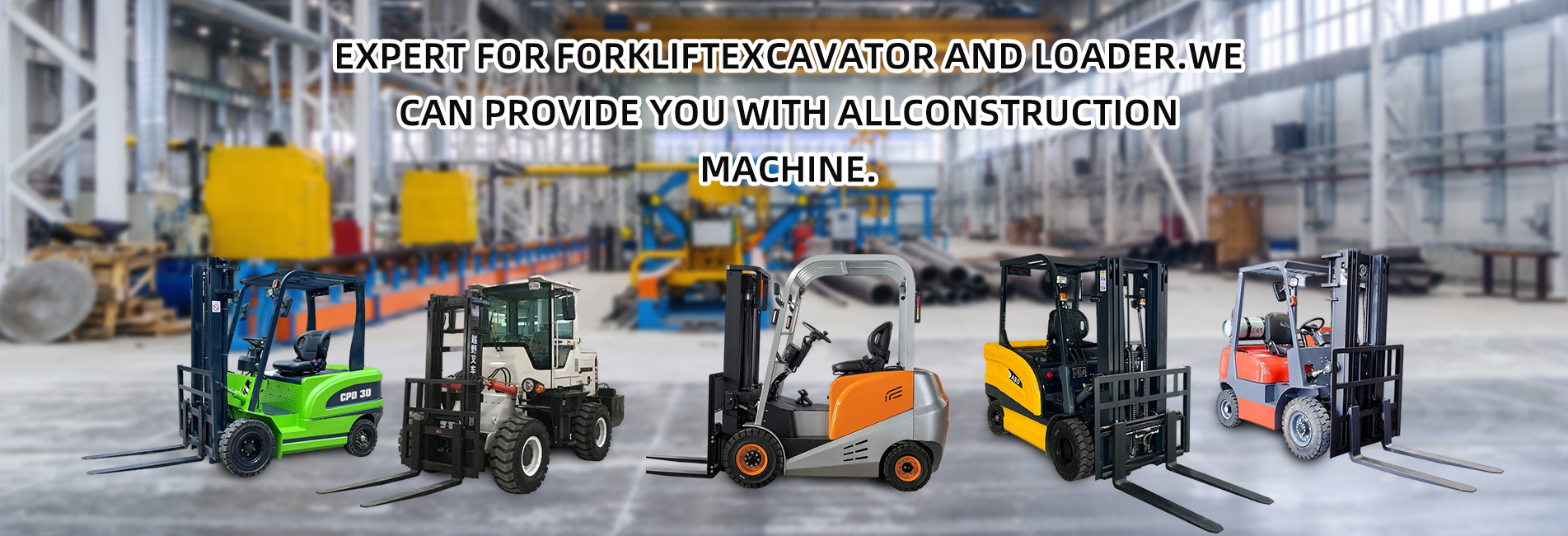The safety of electric forklifts is a core consideration in their design and use, involving multiple aspects such as the safety configuration of the equipment itself, operational specifications, and maintenance management. The following is a detailed explanation from three dimensions: equipment safety design, key points of operational safety, and maintenance and supervision:

I. Safety Design of the Equipment Itself (Active and Passive Protection)
Electric forklifts reduce risks through multiple hardware and software designs. Common safety configurations include:
- Stability Assurance:
- Adopting a counterweight design (especially for models above 2-3 tons) to reduce the risk of rollover; some models are equipped with tilt sensors, which automatically limit the forward/backward speed or cut off power when the tilt angle exceeds the safety threshold.
- A low-center-of-gravity structure, combined with wide-base tires, enhances stability during driving and lifting.
- Operational Safety Devices:
- Emergency power-off switches: Installed in multiple locations on the vehicle body (such as the operation platform and battery compartment) to quickly cut off the power in case of emergency.
- Overload protection: When the load exceeds the rated tonnage, the lifting motor automatically stops working to avoid rollover or structural damage caused by overloading.
- Acoustic and optical warning systems: Automatically activate buzzers and warning lights when reversing; some high-end models are equipped with 360° cameras or radars to reduce blind spots in vision.
- Brake safety: Adopting a dual system of electromagnetic braking + mechanical braking, which automatically applies the brake when the power is off to prevent sliding; the "ramp assist" function can be activated during ramp operations to avoid backward sliding when starting.
- Human-Machine Protection:
- The cab is equipped with a Rollover Protective Structure (ROPS) and a protective top rail to resist impacts from falling goods or rollovers; some models are equipped with a seat belt interlock device, which cannot start when the seat belt is not fastened.
- The design of operating components such as handles and pedals conforms to ergonomics, reducing errors caused by operational fatigue.
II. Key Points of Operational Safety (Control of Human Factors)
Even if the equipment is fully configured, improper operation may still cause accidents, so the following specifications must be strictly followed:
- Pre-job training: Operators must work with valid certificates, be familiar with the performance of the model (such as turning radius and climbing ability), and understand emergency operation procedures (such as emergency stop and manual lowering of forks).
- Driving safety:
- Drive at a limited speed (usually ≤5km/h indoors, ≤10km/h outdoors), slow down and sound the horn at turns and intersections.
- Keep the forks 30-50cm off the ground to avoid collision with the ground or obstacles; when the line of sight is blocked while carrying goods, drive in reverse or be guided by someone.
- Overloading and unbalanced loading (such as picking goods with a single fork) are prohibited, and carrying people is prohibited (except for special models with passenger-carrying devices).
- Attention to the working environment:
- Keep the passage unobstructed, remove oil stains and debris to avoid slipping; anti-slip tires are required on slippery surfaces (such as cold storage).
- Stay away from fire sources (although electric forklifts have no exhaust gas, battery short circuits may cause sparks, so they should stay away from flammable and explosive areas).
III. Maintenance and Supervision (Long-term Safety Assurance)
- Regular inspection:
- Battery: Check the Power and whether the terminals are loose every week, avoid overcharging and over-discharging (lead-acid batteries need regular water replenishment, lithium batteries need to detect the state of battery cells), and prevent short circuits and fires.
- Brake system: Test the braking effect every month to ensure that the electromagnetic braking and mechanical braking are sensitive and reliable.
- Structural components: Check whether the forks and chains are deformed or worn, whether the gantry lifts smoothly, and replace aging parts in time.
- Supervision and records:
- Establish equipment ledgers, record maintenance cycles and fault handling conditions, and avoid "operation with faults".
- Install on-board monitoring systems (such as GPS positioning and operation recorders) to monitor behaviors such as speeding and illegal operations, and correct them in time.
Summary
The safety of electric forklifts is the result of the combined effect of equipment design, standardized operation, and regular maintenance. Compared with internal combustion forklifts, their characteristics of no exhaust pollution and low noise make them more suitable for indoor safe operations, but special attention must be paid to battery management and the stability of the electrical system. Enterprises need to select suitable models according to the scenario and minimize safety risks through strict training and management systems.


